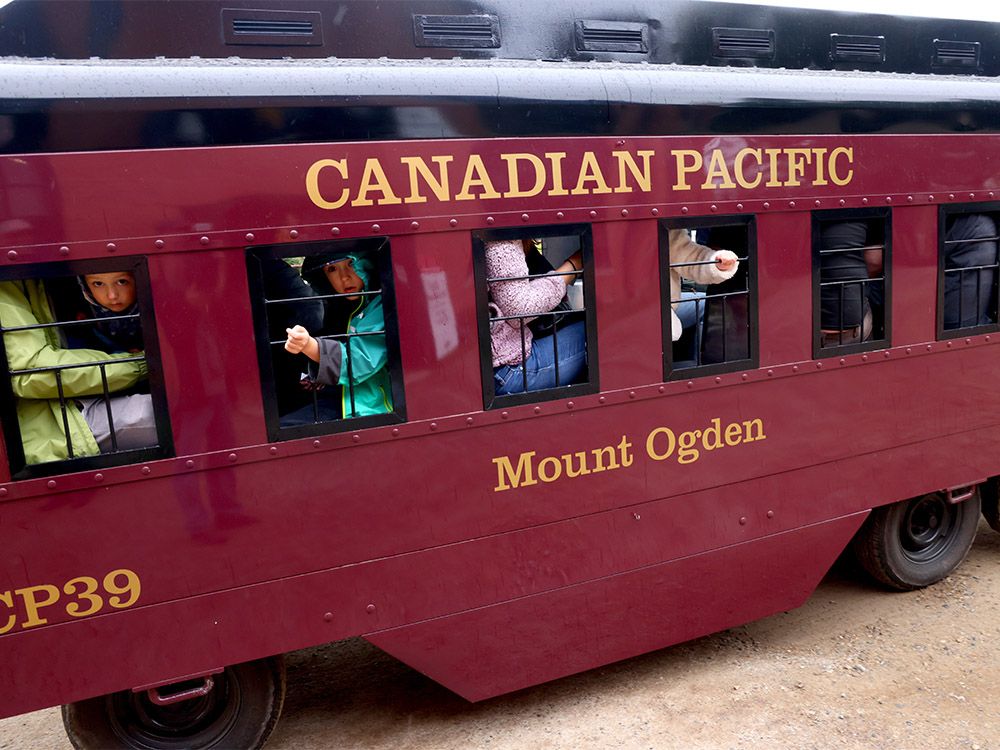Trump’s talk about Canada parrots Putin’s claims on Ukraine
It took a while for Canadian politicians to figure out that Donald Trump wasn’t joking with his talk about annexing Canada. After Trump raised the idea at a dinner in Mar-A-Lago attended by Prime Minister Justin Trudeau on Nov. 29, Intergovernmental Affairs Minister Dominic Leblanc said the “joke” was actually a positive.
“The president was teasing us. It was, of course, in no way a serious comment,” LeBlanc said. “The fact that there’s a warm, cordial relationship between the two leaders and the president is able to joke like that, we think, is a positive thing.”
No one is calling it positive now.
Perhaps Canadian politicians can be forgiven their slowness of uptake, given that Trump’s comments are entirely unprecedented in modern U.S.-Canadian relations. But there is one strong parallel for his remarks. While Trump’s words may never move past the talking stage, they resemble the claims, pretexts and justifications used by Russia’s Vladimir Putin before and during his invasion of Ukraine.
Canadians’ secret desire to be annexed
“Many people in Canada LOVE being the 51st State,” Donald Trump wrote on his social media platform Truth Social on Jan. 6. “The United States can no longer suffer the massive Trade Deficits and Subsidies that Canada needs to stay afloat. Justin Trudeau knew this, and resigned. If Canada merged with the U.S., there would be no Tariffs, taxes would go way down and they would be TOTALLY SECURE from the threat of the Russian and Chinese Ships that are constantly surrounding them. Together, what a great Nation it would be!!!”
That post contained themes that would later become staples of Trump and his supporters’ claims about Canada. First is the claim that lots of Canadians want to become Americans. Some in Trump’s Make America Great Again movement have explained the absence of a visible groundswell of support for annexation in Canada as a result of a harsh regime of censorship, as decried by Elon Musk and this week by Joe Rogan.
Canadians’ supposed secret desire to be annexed might sound familiar to Russians who have heard their leader make similar claims about Ukrainians, says Maria Popova, an expert on Russian politics at McGill University. “The whole argument is based on the claim that fundamentally and deep down, all Ukrainians want this,” she said. “They want this unification with Russia.”
In a long op-ed he wrote in July 2021, Putin laid out his claim that the Ukrainian people, in their hearts, aspired to be part of Mother Russia, but their voices were censored.
Better off together
Like Trump extolling the economic wonders of a U.S.-Canada annexation (“what a great Nation it would be!!!”), Putin said a combined Russia and Ukraine would be much better off. “Together we have always been and will be many times stronger and more successful,” wrote Putin. “We are natural complementary economic partners.”
Popova says both leaders like to emphasize how annexation would be good economically for all concerned. “The first parallel I see is the argument that it is somehow in Canadian’s best interest to be a part of the U.S. because fundamentally we’re not that different. This is indeed very similar to the argument that, you know, Ukrainians have some sort of quirky identity maybe, but fundamentally we’re the same.”
Ukrainian President Volodymyr Zelenskyy has said in recent days that Trump’s view on the war is clouded by Russian misinformation.
Many of Putin’s arguments about Russians and Ukrainians are based on Kremlin-centric historical narratives that, he claims, show a common identity. “The thrust of the Russian argument is that Ukraine is not a real country, that Ukrainians are fundamentally wayward Russians,” said Popova. “They’re these younger little brothers who are going in the wrong direction and they need to be brought back into the fold of the Russian nation.”
Trump is no student of history (he famously claimed that George Washington won the American Revolution after he “took over the airports”), and he hasn’t echoed Putin’s long-winded historical arguments about shared ethnicity. But Americans are, of course, well aware of the cultural affinity of the two former British colonies — a selling point for Canadian politicians trying to pitch Canada’s case in the U.S. No prominent Republican has proposed annexing Mexico as a solution to its ostensibly similar trade and border issues.
‘Artificial’ lines and countries
Canadian officials have said that the moment they realized Trump was serious about annexation was when he began to raise the history of U.S.-Canadian border arrangements, specifically the 1908 treaty that fixed parts of the border. The officials haven’t revealed exactly what Trump said about the treaty.
Putin has questioned the legitimacy of historic agreements over the border between Russia and Ukraine, particularly Nikita Khrushchev’s decision in 1954 to give Crimea to the Ukrainian Soviet Socialist Republic. “Ukraine is an artificial state,” Putin told Tucker Carlson in an interview in February 2024.
The U.S.-Canada border is an “artificially drawn line,” Trump said in a Jan. 7 news conference. “You get rid of that artificially drawn line, and you take a look at what that looks like. And it would also be much better for national security,” Trump said. “That would really be something.” Trump followed up with a social media post including a map that erased the nation of Canada.
“The reference to a meaningless administrative border,” said former Canadian diplomat and international lawyer Sabine Nölke, “is how Putin described Ukraine.”
Nölke was Canada’s permanent representative to the international courts at The Hague as well as ambassador to the Netherlands until 2019.
“Now all of a sudden Trump started using that language,” she told CBC News, “and it came in the context of him waving around this 1908 border treaty between Canada and the U.S.”
That treaty, says Nölke, is a minor administrative one that mostly deals with physically marking borders already delineated in previous accords. “He latches on to little things as evidence or as being connected to a bigger idea he has. And his big idea is Canada is not a legitimate state.”
“So somebody has waved this treaty at him. So he’s now running around saying ‘Aha, see there, it’s all administrative. It doesn’t really exist,’ completely and utterly ignoring all the other indicia of Canadian statehood, sovereignty and territorial integrity.”
But the bigger message is you don’t exist. You should be part of us.
The myth of subsidies
Trump’s grievances toward Canada are also ostensibly about money, and the charge that Canada is stiffing the U.S. on trade, defence and energy.
“Canada has been very tough to deal with over the years, and it’s not fair that we should have a $200 billion or $250 billion deficit,” he claimed on his third full day in office.
Putin, in his national address on Russian state TV two nights before the full-scale invasion of Ukraine, made similar claims.
“Our Ukrainian colleagues turned to us for financial support from the moment they declared independence,” he claimed. “According to expert assessments … the overall benefit for the Ukrainian budget amounted to $250 billion.”
Putin accused Kyiv officials of “a parasitic attitude.”
Trump has complained “We pay hundreds of Billions of Dollars to SUBSIDIZE Canada…. Without this massive subsidy, Canada ceases to exist as a viable Country.”
In his eve-of-war address, Putin told Russians that Ukrainian authorities “always preferred dealing with Russia in a way that ensured they enjoy all the rights and privileges while remaining free from any obligations.”
Protection rackets
“Russia has also constantly insisted that it is the best guarantor of Ukrainian sovereignty and security,” said Popova. “And this is something that Trump has started bringing up as well, this idea that Canada needs protection from something, and only the U.S. can provide this protection.”
Popova says Trump’s comments about Russian and Chinese ships being near Canada are a “really big red flag.”
“Take a look at what’s going on out there [in Canada],” he said on Feb. 13. “You have Russian ships, you have Chinese ships, you have a lot of ships out there, and you know, people are in danger. This is a different world. Today it’s a different world. They don’t have any military protection.”
The parallels between Trump’s rhetoric on annexing Canada and Putin’s justifications for invading Ukraine are striking. Both leaders appeal to historical ties and shared economic benefits, while also casting doubt on the legitimacy of the countries they seek to annex. The idea of protection and subsidies play a role in their arguments as well, painting a picture of a nation in need of assistance and security.
As Canadian politicians grapple with the implications of Trump’s comments, they are faced with a challenging reality that echoes the experiences of Ukrainians in the face of Russian aggression. The question remains: will Canada be able to maintain its sovereignty and independence in the face of such threats, or will it become another pawn in the power games of world leaders? Only time will tell.




